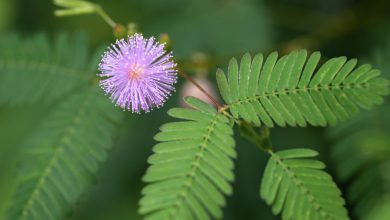Christmas Cactus: [Growing, Care, Irrigation and Substrate]
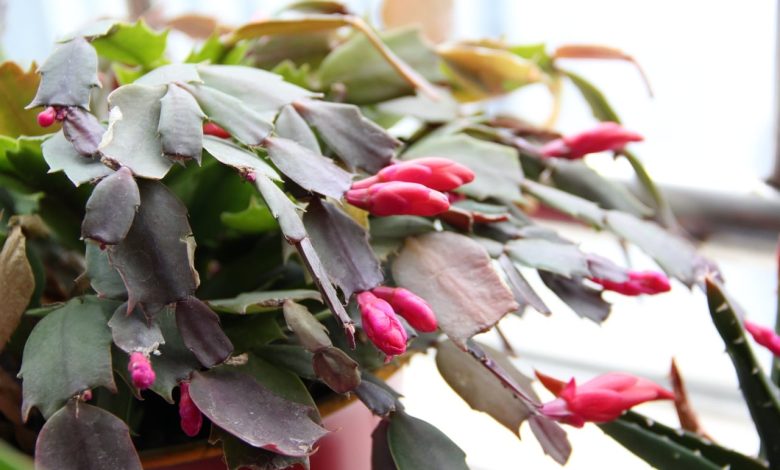
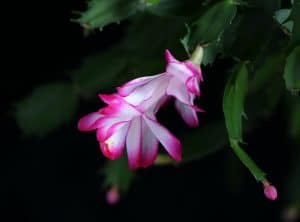 The Christmas cactus is an exotic plant native to Brazil, which belongs to the cacti family, stands out for its colorful and impressive flowers that are shaped like feathers and has spread to many parts of the world:-).
The Christmas cactus is an exotic plant native to Brazil, which belongs to the cacti family, stands out for its colorful and impressive flowers that are shaped like feathers and has spread to many parts of the world:-).
It is also defined as winter cactus, Easter cactus, Thanksgiving cactus, or Santa Teresa feathers.
Increasingly, it has been used as a houseplant and an ornamental plant.
It is a totally different cactus from the other species, because it does not have spikes; its colors are pink, red and white.
It is an easy-to-grow plant, although very fragile, because its segments can break for no apparent reason, and for this reason we must take extreme care;-).
Important points in the cultivation of Christmas cacti
- Keep them in a pot with sandy soil.
- Water only when the soil is completely dry.
- Provide some humidity to the environment.
- Don’t worry if some of the buds fall off, it’s natural for the plant to lose some.
- Keep the temperature above 21ºC during the day, 13 – 18ºC at night.
- No matter what regimen you use or how strictly you stick to it, flowering time can vary by strain.
Temperature: Where to plant the Christmas cactus?
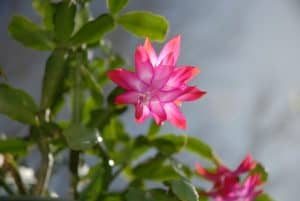 The Christmas Cactus is a plant that can be grown both inside and outside our homes, if we live in a warm climate area.
The Christmas Cactus is a plant that can be grown both inside and outside our homes, if we live in a warm climate area.
But it is indoors where it grows in better conditions.
It can grow in minimum temperatures between 3ºC and 5ºC, but the ideal temperature should be between 10ºC and 25ºC.
Although this plant can withstand low temperatures, it is not convenient to expose it for a long time to these, because we run the risk of losing it.
It is important to avoid air currents that are harmful to the plant.
Light: What needs does the Christmas cactus have?
 The Christmas Cactus needs a lot of natural light, but if we are going to grow it outside the house, we must put it in semi-shade, because although it needs a lot of natural light, it should not be directly exposed to the sun.
The Christmas Cactus needs a lot of natural light, but if we are going to grow it outside the house, we must put it in semi-shade, because although it needs a lot of natural light, it should not be directly exposed to the sun.
Excessive sun can dry it out, so we must take measures inside the house when placing it in a window, so that the sun does not make direct contact with the plant.
For this, it is convenient to place it where there is double glass, a curtain and adequately distance it from the entrance of light.
Substrate and fertilizer: How do we prepare the land?
A specific fertilizer for the Santa Teresa pen is vital. In this way the plant will grow strong and will not get sick, but since it is difficult to get it, natural fertilizer may be enough.
We must bear in mind that this ornamental plant can have a life of up to ten years in a pot, a pot with holes, that is why it needs a substrate with good drainage and enough organic matter to obtain adequate flowering in the winter.
Irrigation: How and how often do we water the Christmas cactus?
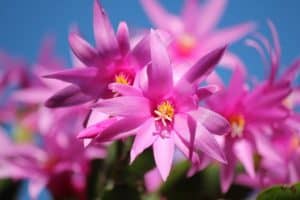 The first thing we must take into account is that this plant comes from tropical Brazilian environments, so it needs a lot of humidity.
The first thing we must take into account is that this plant comes from tropical Brazilian environments, so it needs a lot of humidity.
But attention! This does not mean that we should water it too much, but rather prevent the environment from drying out completely.
Inside, we can put water containers to escort it, so that it absorbs humidity from the environment to grow favorably without drying out or getting sick.
In winter, we must water it twice a week with plenty of water, always with the idea that the environment does not dry out, but avoiding puddles.
In summer, two or three days a week, and in spring and autumn do it every fortnight.
Keep in mind that too much watering can rot and kill it, but too little watering can also dry it out; therefore there must be a balance in the process.
As the Christmas cactus needs a higher supply of magnesium than other plants, it is convenient to fertilize it during its growth with a tablespoon of magnesium sulfate for each gallon of water.
From spring to mid- summer, experts advise a specialized soluble fertilizer for succulents, then stop fertilizing to achieve better flowering.
Christmas cactus care
- As soon as you notice that the upper part of the potting soil where the Christmas cactus is planted is dry, soak it with water until it runs through the drainage holes of the pot; pour out the water that is in the tray so that the plant does not settle in the water.
- It is especially important to water well while the plant is blooming. From spring to early fall, add every two weeks with a balanced houseplant fertilizer. During the fall and winter, use this fertilizer monthly.
- Prune plants in June to encourage branching and flowering. Simply cut a few sections off each stem. If desired, place the cut pieces in moist vermiculite so they will root easily.
- If your Christmas cactus isn’t blooming, it could be due to the amount of daylight they’re getting or the temperature.
- For the flowering to develop correctly, the nights must last at least 14 hours and the days between 8 and 10 hours for six weeks. If you have strong indoor lighting at night, you may need to cover your cacti.
Pests and diseases that attack the Christmas cactus
flower drop
If your Christmas cactus is exposed to any kind of stress, the plant will likely drop its flowers.
This could be related to the amount of light, or a sudden change in temperature, as we have mentioned above about its care. Also, make sure the soil doesn’t get too dry while buds are forming.
Mealybugs and root rot
The plant can be susceptible to mealybugs and, if overwatered, root rot. If you have problems, remove infected areas and replant in clean soil.

![Photo of Calibrachoa: [Planting, Care, Irrigation, Substrate and Pests]](https://www.complete-gardening.com/wp-content/uploads/2022/08/calibrachoa-planting-care-irrigation-substrate-and-pests-390x220.png)
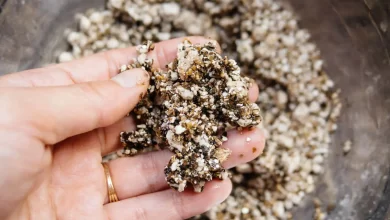
![Photo of The Croton: [Sowing, Care, Substrate, Irrigation] – Complete Guide](https://www.complete-gardening.com/wp-content/uploads/2021/06/croton_1585287769-390x220.jpg)
